
- 魅影直播
- Travel Packages
- Top Destination
-
Travel Attraction
By Category
Top Attraction

- Travel Agents
- Car Rentals
- Hotels
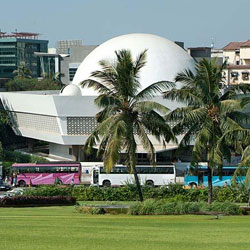
One of India finest architects J.M.Kadri designed this beautiful landmark building which houses Nehru Planetarium. Nehru Centre of Science is also located here. 8 Kms. from the city centre is located a centre telling about the universe. It unfolds the mysteries of the cosmos. They also screen regular film shows on the outer space, which are of particular interest for children. Close by is the Nehru Science centre, which is a science park, and permanent exhibits on intricacies of life. The antique models of Railway engines, aeroplanes, tramcar and steam lorry are exciting to see. Nehru Planetarium is the only astronomical centre in Mumbai, which is also a concert cum movie auditorium. This is the place, recreating the image of the sky as seen from anywhere on the earth at any time. It exhibits collections of lunar and astronomical photographs.
Explore More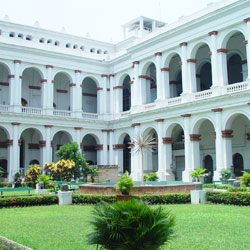
This museum was built in 1875,which was originally founded by Nathaniel Wallich, known as Jadughar, located at the corner of Sudder Street and Chowringhee Road, containing fossil skeletons of prehistoric animals, art collections, rare antiques, mummies, Armour etc. which is probably one of the best in Asia. It certainly the largest and probably the best Museum in India, and one of the best in Asia.
Explore More
This is the largest planetarium in the World near the Government of India tourist office providing a view of the stars and the solar system. For enthusiasts of Astronomy this is a place not to be missed. One of the largest in Asia, close to the crossing of Theatre Road and Chowringhee Road, the Birla Planetarium is adjacent to the Maidan. The planetarium is a single storeyed, circular structure constructed in pure Indian architectural style. The central dome has a diameter of 27m shaped in imitation of the Buddhist Stupa at Sanchi. The central hall can accommodate 500 persons. Interesting exhibits are the fine collections of paintings, celestial models and busts of famous astronomers that line the corridors. The gigantic planetarium projector accessories comprise of 29000 parts and combine to portray on the inner ceiling of the planetarium, the naked face of space, Stars, planets and heavenly bodies.
Explore More
Housed in the former residence of the Lieutenant Governor of Bengal popularly known as Belvedere Estate, The Calcutta public library and Imperial Library amalgamated in 1903 to become National Library, which is supposed to be India's largest library. The erstwhile sprawling residence of the Lieutenant Governor of Bengal, at Belvedere, is a depiction of the Italian Renaissance style. The building that houses the National Library was originally constructed as the Vice regal House around 1700. Meant as a symbol of imperial power, it was built on a grand scale with a high arched gateway, sprawling lawns and ornate halls.
Explore More
The Salar Jung Museum contains the rich & beautiful collection of a man named Nawab Salar Jung III. The museum is located near the river and houses some of the most ancient and rarest objects. In his times, Nizam of Hyderabad was reckoned amongst the richest men present in the world. There are around 35,000 objects of art, which includes clocks, paintings, jade, swords, miniature paintings, jewellery, statuary and Persian manuscripts. There are various priceless treasures like the turban of Tipu Sultan of Mysore, an ivory chair, the exquisite dagger of Nurjahan the Mughal empress and the dressing table of Marie /Antoinette. The museum displays various items that belong to the prehistoric times and also a pavilion, which comprises of the replicas of Ajanta Frescoes.
Explore More
Located in Worli the Nehru Science Museum with sound light gallery has an attractive childrens section. It is the only place, which recreates the image of sky as seen from anywhere on earth at any time. It also has a collection of warplanes, which served the Indian air force. Nehru planetarium was commissioned in 1977 and designed by one of India's finest architects I.M.Kadri. Nehru Centre, a trust headed by the Chief Minister of Maharashtra State, runs it. An astronomical exhibition, comprising of 40 exhibits (transparencies and working model) explain the cosmos. In the auditorium, a breathtaking 'Sky Show' captures the very essence of the Milky Way or Akashganga. Two hundred projectors are simultaneously trained onto a hemispherical ceiling made of aluminum. The effect is realistic and it is not surprising that the planetarium has attracted more than 3 million visitors.
Explore More
It opened in 1986 and now houses the Discovery of India exhibition, an art gallery, theatre and restaurant. Inspired by Nehru's book of the same name, it seeks to explore 5000 years of history by investigating the geographical, social, culture and political forces at play in the subcontinent. It's highly informative in a school trip kind of way. But then it's best to concentrate on just a couple of the major themes, such as the detailed exhibits depicting Nehru's life and times. Other interesting topics include the Mauryan Empire, the impact of the west and the struggle for independence. Children below five years of age not allowed into the Sky Theatre. The Nehru Planetarium is closed on Mondays. It was in 1972 that the Nehru Centre was conceived by the late Shri Rajni Patel and others as a living memorial to the maker of modern India, who symbolized the ideals of enlightened curiosity, scientific temper, secular values, a world view and above all, a faith in the people of India. The late Smt. Indira Gandhi laid the foundation stone of this magnificent dream on November 2, 1972 on a six-acre plot leased by the Government of Maharashtra.
Explore More
Built in memory of Gandhiji, the memorial is a good example of modern architecture. Every year on Gandhiji's birthday 2nd October, the sun's rays fall at the exact spot where the urn was displayed before immersion. It resembles an Orissan temple. Built in memory of Gandhiji, the memorial is good example of modern architecture. Here, the last remains of Gandhiji are kept for public viewing. Next to the Kumari Amman Temple, this striking memorial stored the Mahatma's ashes until they were immersed in the sea.
Explore More
Situated in Bhopal, The Indian Bharat Bhawan is a multi-arts museum and complex. The place was developed by the Government of Madhya Pradesh and opened for the public in the year 1982. The institution is run by an autonomous Trust of 12 members. The location of The Indian Bharat Bhawan is mesmerizing, as it faces the Upper Lake in Bhopal. The structure is a hub that houses fine art workshops, an art gallery, a studio theatre, an open-air amphitheater, a museum for tribal and folk art, an auditorium and libraries of folk music/ classical music/ Indian poetry. The Indian Bharat Bhawan was inaugurated by then Prime Minister, Indira Gandhi. Since the place opened, it has become an important cultural institution of India. It is believed to the best cultural place that attracts a lot of scholars, artists and students from Mumbai, Indore, Kolkata and various place of the world.
Explore More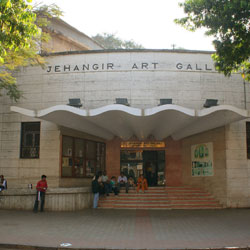
A prime art gallery in the city of Mumbai Jehangir Art Gallery caters to the artistic tastes of people. This is situated behind the museum and has four exhibition halls. Facing Elphistone College and adjacent to the Prince of Wales Museum, this gallery situated at Kala Ghoda is the most prestigious and modern venue for Indian artists. It was built in the year 1952. Managed by the Bombay Art Society, the entire cost of this beautiful mansion was donated by Cowasji Jehangir. This gallery is one of the city's most highly visible art galleries and having to exhibit a work of art here is a great treat for artists. The unending list of applicants to have their work put up on the walls of this gallery speak for itself of the great importance and the media attention one attracts. Some might have to wait a couple of years to have their work put up here.
Explore More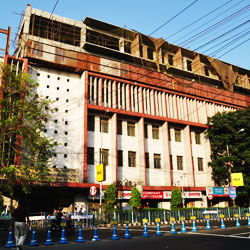
Sir William Jones founded this Asiatic Society in 1784 under the patronage of Warren Hastings, which is famous for collection of Indology, Literature and Scientific Research of about 20000 volumes including some 8000 rare Sanskrit, Arabic, Persian and Hindi manuscripts. The Society containing material of utmost importance publishes the Journal of The Asiatic Society of Bengal and The Proceedings. The Library contains approximately 20,000 volumes inclusive of 8,000 rare Sanskrit, Arabic, Persian and Hindi manuscript. The archaeological relics, geological and ethnological specimens whom the museum of this society possessed formed the nucleus of the Indian Museum opened in 1875. Sir William Jones founded this Society, in order to advance the study of Indology. Intended for literary and scientific research.
Explore More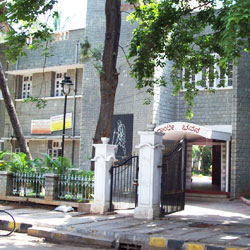
Gandhi Bhavan of bangalore is dedicated to Mahatma Gandhi, the Father of the Nation. The Bhavan was set up with the intention of promoting the life and teachings of Gandhiji. Situated on the Kumara Krupa Road, Gandhi Bhawan was started as Gandhi Smaraka Nidhi, under the chairmanship of Dr Rajendra Prasad.The Gandhi Smarak Nidhi, housed in the Gandhi Bhavan seeks to propagate the life and teachings of Gandhiji. The Gandhi Smarak Nidhi has organized a comprehensive picture gallery depicting Gandhiji's life in pictures from early childhood to the last day. Photostat copies of letters written by him to various personalities of his day can also be seen. The gallery has photographs of Mahatma Gandhi, from early childhood to the last day of his life. Apart from that, there are also Photostat copies of the letters written by him to the various personalities of his time.
Explore More5 Night - 6 Days Maharashtra 5 Jyotirlinga Darshan Tour
6 Days/ 5 Night
Aurangabad - Pune - Shirdi - Trimbakeshwar - Shani Shingnapur - Hingoli - Beed
4 Night - 5 Days Kashmir Tour Package
5 Days/ 4 Night
Srinagar - Pahalgam - Sonamarg - Gulmarg
Lucknow - Ayodhya - Varanasi Tour Package
5 Days/ 4 Night
Lucknow - Varanasi - Ayodhya
6 Night 7 Day Goa Tour Package
7 Days/ 6 Night
Panaji - North Goa - South Goa
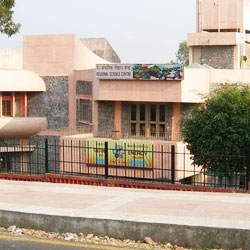
The Regional Science Centre is situated in the Shyamla Hills area of Bhopal, India. The place is constructed with the mission to popularize science and technology among people and specially among students. The place was inaugurated in the year 1995 by the then president Mr. Shankar Dayal Sharma. The place is a popular destination and one of the constituent units of the National Council of Science Museums or NCSM. The Regional Science Centre is open every day of the week. However, it is closed on festivals of Holi and Diwali. The centre incorporates over 266 science exhibits out of which most are interactive. The campus of The Regional Science Centre spans over 5-acre out of which 3-acres are dedicated to the Science Park that consists of more than 60 exhibits. Besides the park, the centre has a zoo and a small Dinosaur Park.
Explore More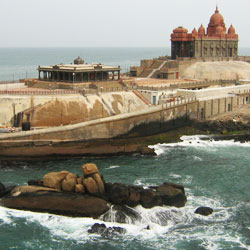
On the seaside is built a large, beautiful memorial dedicated to the Indian philosopher, Swami Vivekananda, who is said to have meditated here before setting out as one of India's most important religious crusaders. There is a Dhyana Mandapam for one to sit in a serene atmosphere and meditate. This memorial is on two rocky islands projecting from the sea about 400 m offshore. The Indian philosopher Swami Vivekananda came here in 1892. The memorial has been built on the Vivekananda Rock where the great philosopher - guide Swami Vivekananda went into meditation that transformed him into one of the most charismatic spiritual leaders of this century. The mandapam, standing here in his memory, was built in 1970 reflecting architectural styles from all over India. Kanyakumari is famous for Vivekananda's rock, a huge stone rising out of the sea. It now houses the statue of Vivekananda with his memorial. Not surprisingly, Kanyakumari is a popular destination for Vivekananda's followers, so there are many Bengalis here, and some Bengali hotels and restaurants too.
Explore More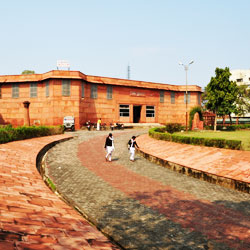
Cunnigham, Growse, Fuhrer and others unearthed the rich treasure of antiquarian values, which form the nucleus for the present museum located at Dampier Park, Mathura. It houses rich collections of fine sculpture, terracotta, bronze objects of the Maurya, Sunga, Kushan and Gupta periods. It also houses the famous standing Buddha from the 5th century AD.
Explore More
George Wittet designed this Indo- Saracenic style building, which houses the Prince of Wales Museum. It also houses a priceless collection of art, sculpture, a fine collection of miniature paintings and much more. Amid the hustle and bustle of Mumbai stand some stately buildings, remnants of the British Raj. Among them is the Prince of Wales Museum, named after Prince George (Later George V) who visited India in 1905 and laid the foundation stone of the building. Through the arch the Prince made his royal entrance to India as King George V for the Delhi Darbar in 1911. This four-tiered goliath houses a priceless collection of over 2000 miniature paintings from various stylistic schools in India. Among other artifacts feature a sizeable number of relics of the Indus Valley Civilisation and instances of Tibetan and Nepalese art.
Explore More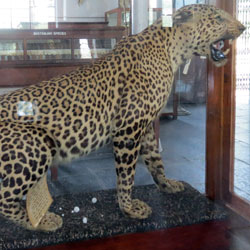
Forest College Museum is located 3.5 Kilometers north from the Dayangere railway junction. This college is very old and unique in its kind! You can see here remains of plants and fossils of animals.
Explore More
Dedicated to the memory of the great Queen Durgavati, it is her memorial and museum, which houses a fine collection of sculptures, inscriptions and prehistoric relics. The museum has a good collection of artifacts and also has a section dedicated to artifacts and photos related to Mahatma Gandhi.
Explore More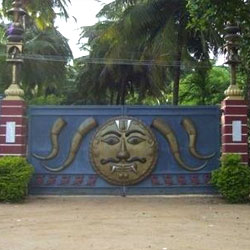
Karnataka Folk Museum Located on the Kumara Park West, Sheshadripuram, this folk Museum is managed by Karnataka Janapada Trust and has an impressive collection of folk music and videotapes of folk dances. Many unique masks, colourful artifacts and costumes have been displayed. The Janapada Loka or the folk museum is situated about 53 Kms from Bangalore on the Bangalore Mysore highway. It is a mere 3 Kms from ramanagaram. This little known museum, devoted to covering Karnataka diverse folk life, is situated on 15 acres of land and the entire area is covered with trees. As a result even though there is much ground to be covered, all the paths leading to the different buildings are shady. The artifacts are housed in three little buildings - Lokamahal, Lokamatha Mandira and Chitrakuteera. The Lokamahal is the most comprehensive, housing a number of interesting folk puppets, utensils, instruments, weapons and masks. While a variety of utensils, baskets, and earthen jars used to store grain and pickles are displayed in the Lokamatha Mandira, the Chitrakuteera has a number of photographs covering different aspects of folk life.
Explore More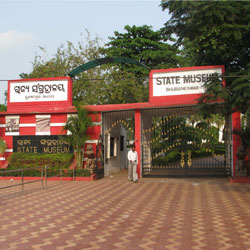
It houses a rich collection of sculptures, coins, copper plates, stone inscriptions, lithic and bronze age tools, rare manuscripts written on palm leaves, traditional and folk musical instruments. Rare epigraphic records are preserved in the Epigraphy Gallery. A visit to the museum provides an instant overview of Orissa as it was and of course still is. The Handicrafts Museum has a splendid collection of stone sculptures, patta paintings, brass castings, horn toys and Orissa's famous silver filigree work. The Tribal Museum provides an insight into the Tribal Culture of Orissa. The genesis of the Odisha State Museum goes back to the year 1932, when two notable historians Prof. N. C Banerjee & Prof. Ghanshyam Dash of Ravenshaw College, Cuttack started collection of archaeological treasures from various places. The small museum was then housed within the premises of the College. In 1938, by a suitable order, the Government of Odisha transformed this nucleus into the Provincial museum of Odisha. Maintaining close contact with the general public and the Archaeological Department of the Government of India and other States, the Museum continued to grow. In order to popularize the cultural exhibits of the Museum, leaflets printed both in Odia and English were published in the Samaj and the New Odisha and copies of the same were sent to officials and the public to create a sense of awareness about the significance of the Museum.
Explore More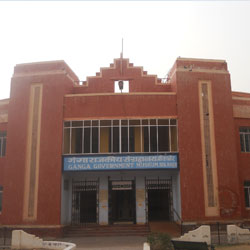
Ganga Golden Jubilee Museum also has some collectibles which more than somewhat saying historical like old photographs, trophies, shikar objects early cameras and movie projectors and weapons. This museum is said to be the best in Rajasthan and is now run by the Government of Rajasthan. It has a superb collection of terra-cotta ware, paintings, coins, sculptures and arms. Inauguration Bikaner Museum was founded by his Majesty Ganga Singh, on the occasion of his golden jubilee in 1937, when he completed fifty years of his reign. A big celebration was held and dignitaries from overseas graced the festivity. Lord Linlithgow the then Viceroy of British India did inauguration of this museum.At first the museum was housed in a sand stone building near the Lalgarh palace, but it was rather a small building. So a mew building was constructed and his majesty Karni Singh declared it open to visitors on September 4/1954. In the first six years of its inauguration it remained in charge of the state government of Bikaner. Then in 1950 it was handed over to the state government of Rajasthan. Most fascinating Twelve Months Paintings of this series reflect the mental agony of a young girl who is in love with a noble man of warrior community, who has gone out to a war. In these paintings the mood of this girl, is depicted. She is shown pining, as many months have been spent without the caresses and embraces of her lover. Further she is shown in other paintings revealing the cruel time, that is eating up her youth and charming perfection of her anatomy. She is shown in her agony through the various seasons and natural phenomenon. Witnessing the moon she says, 'O Moon you know my condition, that when the whole world sleeps during night, I keep awake and you give me company, therefore you are my true companion. Now please do me a favour that since you may see the whole world, while you keep shining in the sky so find it out where my lover is and give him my message of love and good wishes and tell him to come immediately to me". Visiting hours 10.00 A.M. to 4.30 P.M. Weekly holiday Every Friday.
Explore More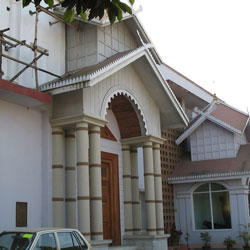
Near the Pologround, is the interesting museum and is the best place to get a glimpse of the Manipur history and culture. It has a fairly good display of Manipur's heritage. It is open from 10 am to 4.30 pm on all days except Sundays and Holidays.
Explore More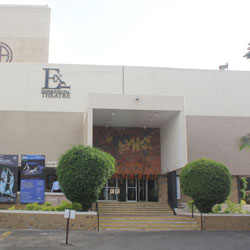
National Centre of Performing Arts
The National Center of Performing Arts was established in 1966 to preserve and promote India rich cultural heritage in classical and folk music, dance and drama. Apart from its traditional art schools, India also has a contemporary art lineage that began in the early fifties. While pioneers like MF Hussain and FN Souza spearheaded this modern art movement, Mumbai was the cradle of these brave new aesthetes. Today, contemporary Indian art is known to the world over, which can be viewed at the National Gallery of Modern Art bang opposite the Prince of Wales Museum. Converted from an old public hall, this dynamic, three tiered structure houses collections from India's best known living artists providing a convenient overview of the country's contemporary art scenario.
Explore More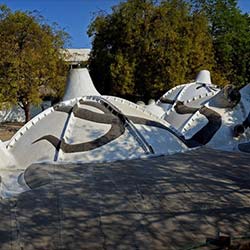
Popularly known as Amdavad ni Gufa it is an underground art gallery housing the collaborative effort of artist M. F. Hussain and the architect B. V. Doshi. This marvel of contemporary architecture was constructed using computer aided design and tribal initiative, adding a new dimension to viewing art. For the lovers of art and architecture this gallery is worth a visit. Art and architecture fuse to become a unique experience, both complementing each other magnificently. The Gufa is a configuration of cave-like structures buried under the ground. This marvel of contemporary architecture is a fusion of the modern and ancient ideas.
Explore MoreCharming Munnar Tour Package
2 Days/ 1 Night
Munnar
5-Day Travel Itinerary - Mumbai To Goa Tour
5 Days/ 4 Night
Goa City - North Goa - South Goa
3 Night 4 Days Ayodhya, Prayagraj, Varanasi Tour Package
4 Days/ 3 Night
Ayodhya - Prayagraj - Varanasi
3N 4D Jaipur - Ajmer - Pushkar Tour Package
4 Days/ 3 Night
Ajmer - Jaipur - Pushkar

Baroda Museum and Art Gallery and The Maharaja
The Baroda museum and art gallery and the Maharaja Fateh Sigh Museum have excellent artwork collections by Indian artists and European Masters of Mughal miniatures and valuable palm leaf manuscripts of Buddhist and Jain origin. This museum is located in Sayaji Bagh, a garden that is popular with the inhabitants of Baroda, who picnic and stroll there.
Explore More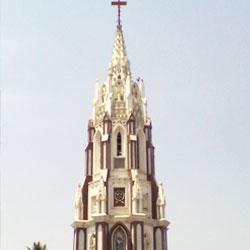
A small chapel was the original structure built by Abbe Dubois, French missionary. This chapel is right opposite the Russel Market Square. The interior is remarkable, with stained glass windows and multiple columns with a rich Corinthian capital supporting the stately arches. Many devotees dressed in orange, gather here to celebrate St Mary's Feast in September every year. A papal order from Pope John Paul VI gave the church the status of a Basilica in 1973. If you seek the Mother Mary's blessings then visit the church on Saturday. The present structure was built in 1875-1882.
Explore More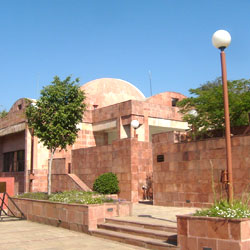
Indira Gandhi Rashtriya Manav Sangrahalaya (A Post Colonial)
The Indira Gandhi Rashtriya Manav Sangrahalaya (National Museum of Mankind) is a unique Museum, on the Shamla Hills on the Upper Lake front. It is a postcolonial museum of communities rather than objects. A road leading to Van Vihar branches off uphill to Manav Sangrahalaya - an anthropological institution housing a vast repertoire of tribal and folk arts from across India. Situated on the hill by the side of the Upper Lake, surprisingly an entire fishing village has been replicated towards the lakeside with a black, sleek snake boat from Kerala catching immediate attention. Even its shelter has been designed in an ethnic fashion. Most of it is now covered in wild grass medicinal plants used by the tribals in traditional system of medicine. It is a unique museum spread over 200 acres of undulating land, situated in a prehistoric site and may be the only museum in the world strewn with numerous prehistoric painted rock shelters. It is engaged in recollection rather than collection. This has been curated directly by the folk and tribal communities, camping at site, to create a miniature presentation of Indian folk ways through display of ecospecific habitations and subsistence practices in the tribal, coastal, desert, and Himalayan habitats. The tribals themselves built a hilltop village resembling a tribal hamlet with each shack unique to a tribe from one part of the country or the other with original material. This part of the museum has been put together painstakingly over the years by inviting one tribe at a time. The library, audio-visual archive, computerized documentation and the collection of ethnographic specimens in the Museum, though modest in size are among the best in the world.
Explore More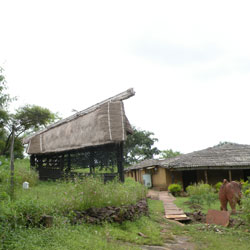
Tribal Habitat (Museum of Man):
The Tribal Habitat, an open-air exhibition on Shamla Hills provides a picture of the tribal cultures of India. It is a presentation of actual-size dwellings typical of contemporary tribal cultures in various states of India.
Explore More
Rajasthan has become one of the leading destinations in India and every year lakhs of tourists from all corners of the world throng the exquisite place. The place has an extremely rich history and offers tourists several attractions. The state has gained huge popularity for its majestic forts and unique palaces that go a long way in adding charm to its beauty. The exquisiteness of Rajasthan is such that the place receives a significantly higher number of tourists from many foreign destinations. The diverse and colorful culture of Rajasthan has left scores of foreigners in awe of the place. Among the various stunning places, Sadul Singh Museum has emerged as one of the major sightseeing attractions of Bikaner. Sadul Singh Museum is located with the Lalgarh Palace. According to experts, the art museum has been devoted to succeeding rulers of Bikaner that may include Maharaja Ganga Singh, Sadul Singh, and Karni Singh. When you visit the temple, you will come across a huge collection of Georgian Paintings, stunning photographs, several trophies of hunting, unique artifacts at the gallery of the museum. The museum has segregated the sections in order to devote them to each king highlighting his achievements and heroic activities. Sadul Singh has gained massive fame for its warrior heritage and the place has remained true to that ancestry. Sadul Singh Museum also depicts the images of the royal families and several other items that the royal family used in their day to day life. The different images of many different generations of the royal family have been put together in an attractive style. When you begin to see these pictures and read about them, you will find yourself completely lost in history. The several items available in the museum may include Royal carriage, the train that Maharaja Ganga Singh had purchased from Bikaner, and projectors among others. If you love to explore the history, the place is ideal for you. Visitor Information: Sadul Singh Museum is located on the second floor of the Lalgarh Palace. The museum remains open from 10 in the morning to 5 in the evening. The museum remains closed on Sunday. Traveler Tips: Travellers must be aware of the basic things before venturing into Rajasthan. The temperature of Rajasthan may turn highly humid and hot during the day time. When you step out for sight-seeing, make sure you carry plenty of water in your bags. Due to the high temperature, you may feel thirsty every now and then. When it comes to clothing, make sure you wear light and comfortable clothes. You can capture pictures of the magnificent articles kept inside the museum. You also need to brush up your knowledge about the history of the palace. Things to Do: You can indulge in some fun shopping when you happen to visit Sadal Singh Museum. You can explore the local markets that are full of artistic items. Make sure you do not pollute the place and don’t throw the litter everywhere on the roads. A large number of tourists thronging the Museum do not forget to take the camel ride that will be full of entertainment. Availability: Guides are also available for your convenience. You can hire the guide as per your spoken language. English-speaking guides and regional language speaking guides can be hired to make your trip memorable. Sometimes, the travel and tour operator offers a guide in your package. History: If you want to take a sneak peek into history, you must visit Sadul Singh Museum that offers a rich history to travel buffs. You will get to know the powerful past of royalty in vast details. You will also witness Georgian culture in close detail. You may also capture the beautiful pictures that will become your treasure trove. Best Time to Visit: You need to plan your trip during the colder months. Ideally, you should visit Rajasthan from October to March. Rajasthan remains extremely hot during the summer months and you may not be able to tolerate the extreme heat during these months. However, Mt Abu is comparatively cooler in comparison to the other parts of Rajasthan. You should also avoid touring the place during monsoon season as the rain may impact your sightseeing. Winter has emerged as the best period to make your trip to Sadal Singh Museum. How to Reach? Jodhpur is the nearest airport where you can get domestic flights. And, the nearest railway station is Bikaner Junction or Lalgarh Railway station. You can also get buses that have been plying between major cities. When you get down at the airport and railway station, you can hire autos, taxis, or buses to reach Lalgarh Palace and from thereon you will find the museum on the second floor. Interesting Facts and Trivia About: You will witness clothes and armor at the museum. The museum has a magnificent dome and corridor style architecture. It is in white construction material. You will also get to see the transportation vehicles that kings used for visiting various places. The vehicles include Baggi and train. You will also find detailed pictures of royal families. Nearby 魅影直播: When you are in Sadul Singh Museum, you will witness various nearby attractions to explore. It may include Junagarh Fort, Kota Gate, Lalgarh Palace, Jain temple, Gajner temple, Karni Mata Temple. You can anytime visit these popular places and boost your fun. Therefore, we can conclude here that Sadul Singh Museum, Bikaner has emerged as one of the best destinations in Rajasthan and you will definitely fall in love with the place.
Explore More
Bodh Gaya is not renowned just for its religious legacy. The city is well-known as a place that teaches about the history of the city and the rulers who once ruled it. The information about such things is displayed in Bodh Gaya Archaeological Museum. It is a frequently visited place in Bodh Gaya. Why Is It Famous? 1) Bodh Gaya Archaeological Museum is known for housing historical items that were discovered during excavations.2) There are different galleries in the museum that dedicated to the artifacts connected to Buddhism & Hinduism.3) Stone sculptures of Buddha, Dashavatara of Lord Vishnu, beautifully carved pots, and terracotta items are displayed in different galleries.4) Furthermore, the relics of Buddha are displayed on a separate floor. Every day, the relics are worshipped before being displayed.5) The coins from the period of Gupta, Maurya, and Mughal era are exhibited as well in Bodh Gaya Archaeological Museum. Best Time To Visit:-Anyone can visit Bodh Gaya Archaeological Museum. It welcomes the public every day from 10 am to 5 pm. Visitors require paying a certain entry fee as per their nationality. Moreover, the museum remains closed on all national holidays and Fridays. Nearest Railway Station - Gaya Junction Railway StationNearest Airport - Gaya Airport
Explore More